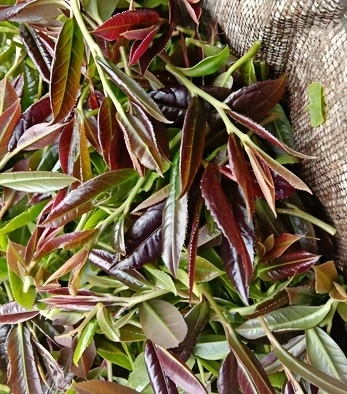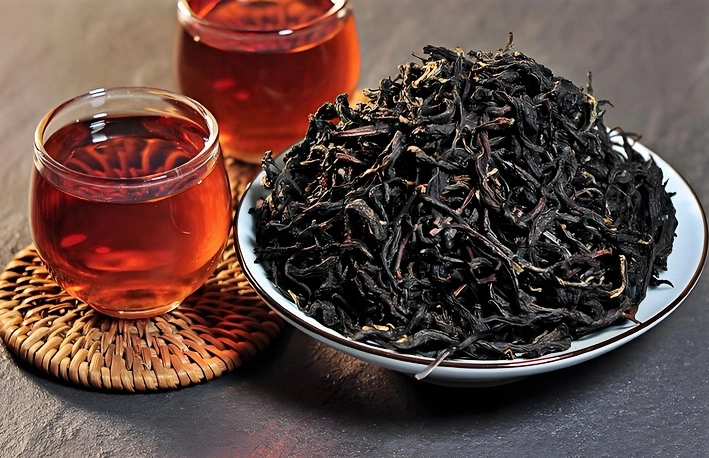Imagine the morning light casting a soft glow across your kitchen as you cradle a warm porcelain cup of black tea. Steam spirals upward, carrying rich malt and honeyed citrus aromas that awaken your senses and soothe your soul. Brewing black tea properly transforms a simple beverage into a sensory ritual that celebrates centuries of tradition. In this guide, you’ll learn exactly how to brew black tea properly—from choosing the right Chinese varietals and equipment to mastering steep times, exploring advanced cold-brew methods, and pairing your tea for maximum enjoyment. Get ready to unlock the full spectrum of flavor, aroma, and comfort in every cup.
Understanding Black Tea Basics
Black tea, or “hong cha” in Chinese, is fully oxidized tea known for its robust character. Three celebrated Chinese varieties include:
- Keemun (Qimen) Black Tea: Gently smoky with notes of dried plum and orchid.
- Yunnan Golden Tips: Rich, earthy, with a honeyed sweetness and peppery finish.
- Lapsang Souchong: Boldly smoky from pinewood firing, evocative of campfires.
Each varietal’s unique terroir and processing lend distinct aromas—wood smoke, malt, spice, or fruit—that beckon you to explore deeper.

Essential Equipment & Water Quality
Choosing Your Vessel
- Porcelain Teapot or Gaiwan: Preserves delicate aromatics of lighter black teas like Keemun.
- Yixing Clay Teapot: Absorbs and enhances the bold earthiness of Yunnan teas.
- French Press: Practical for Western-style steeping, yielding clear, full-bodied liquor.
Water Matters
- Temperature: 95–100 °C (203–212 °F). A full boil releases black tea’s boldest flavors.
- Quality: Use filtered or spring water with moderate mineral content to highlight natural sweetness without harshness.
Step-by-Step Brewing Guide
Tea-to-Water Ratio & Leaf Quality
- Ratio: 2–3 g tea per 200 ml water (1 tsp to 6 oz) for loose leaf.
- Leaf Quality: Look for whole leaves with golden tips or uniform wiry strands—avoid dust or fannings.
Rinsing Leaves (Optional Primer)
- Rinse: Pour hot water over leaves for 5 s and discard. This “awakening” step removes any residual dust and primes the leaves to unfurl fully.
Steeping Times: 3–5 Minutes
- First Steep: 3 minutes for lighter varietals (Keemun).
- Full Steep: 4–5 minutes for robust teas (Yunnan, Lapsang).
- Taste Test: Sample at 3 minutes, then extend by 30 s increments until desired strength and sweetness emerge.

Advanced Techniques for Flavor Control
Multiple Infusions & Leaf Reuse
High-quality leaves can yield two to three infusions—each reveals new layers:
- First Infusion: Bright malt and top notes.
- Second: Deep honey, dried fruit, or smoke.
- Third: Gentle warmth, lingering spice.
Cold Brew Black Tea & Iced Variations
- Cold Brew: Combine 10 g leaves with 500 ml cold water, refrigerate 8–12 h, strain. Expect a silky, low‐tannin infusion.
- Iced Black Tea: Brew double-strength hot tea, cool slightly, then pour over ice. Add citrus slices or mint for a revitalizing twist.
- 🔗 To learn more about the cold brewing method of black tea, check out the YouTube video on the cold brewing method of black tea.
Sensory Evaluation & Tasting Notes
Observing Color & Clarity
A perfect steep yields a clear liquor—amber to deep mahogany—indicative of proper extraction.
Inhaling Aroma: Malt, Citrus, Spice
- Keemun: Orchid floral, slight smokiness.
- Yunnan: Cocoa nibs, malt, black pepper.
- Lapsang: Caveman smoke, pine resin.
Mouthfeel & Finish
Savor a full-bodied mouthfeel that coats your tongue, with a lingering finish—sweet, smoky, or gently astringent, depending on the tea.
Common Mistakes & Troubleshooting
- Over-Steeping → Excessive bitterness. Fix: Reduce time by 30 s.
- Water Too Hot → Scorched notes. Fix: Let boiling water rest 10 s before pouring.
- Leaf Quality Issues → Flat flavor. Fix: Source whole-leaf teas from reputable vendors.
Pairing & Serving Suggestions
Breakfast & Dessert Pairings
- Keemun with buttery scones or fruit tarts.
- Yunnan alongside spiced sausages or dark chocolate.
- Lapsang paired with smoked cheeses or maple-glazed nuts.
Casual vs Formal Tea Settings
- Casual: French press or mug infuser for quick enjoyment.
- Formal: Porcelain or Yixing set for a mindful gongfu ceremony.
FAQ: Black Tea Brewing
- Can I use tea bags or loose leaf? Loose leaf always delivers superior flavor, but high-quality pyramid bags can be a convenient alternative.
- How long to steep for robust flavor? Start at 4 minutes, adjust by 30 s for stronger or milder taste.
- Is it okay to add milk or lemon? Certainly—milk complements full-bodied teas; lemon brightens lighter black teas.
Conclusion & Next Steps
Mastering how to brew black tea properly elevates each cup from routine to ritual. By selecting premium Chinese varietals—Keemun, Yunnan Golden Tips, Lapsang Souchong—using precise ratios and temperatures, and exploring both hot and cold methods, you unlock black tea’s rich tapestry of aromas, flavors, and comfort. Start your journey today: practice these six expert steps, experiment with your favorite teas, and savor the centuries-old tradition with every sip.



